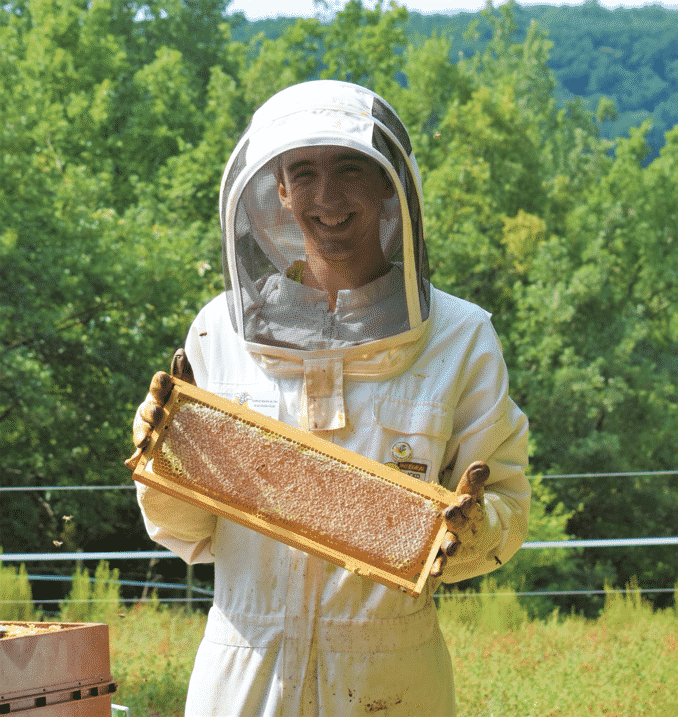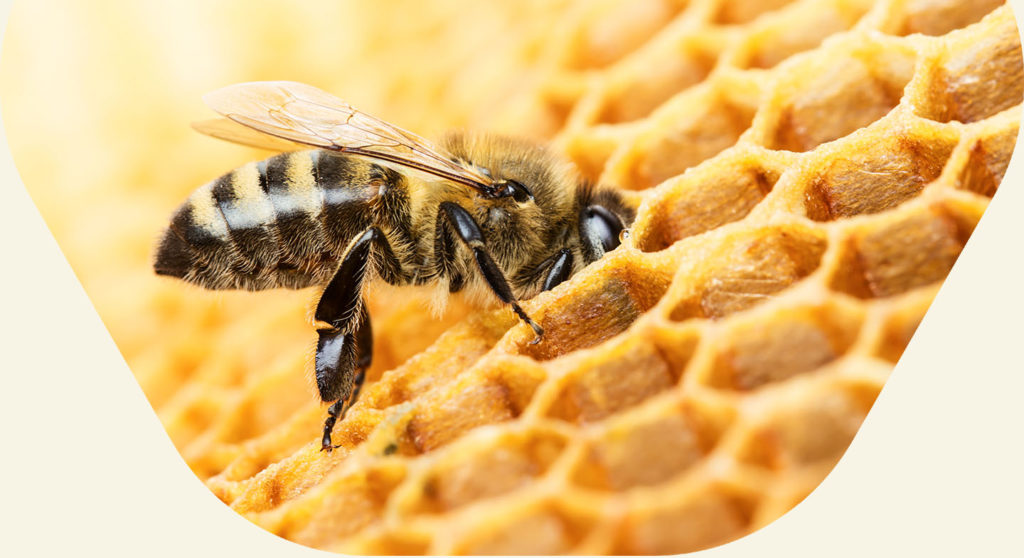API Blog of the Month
Mathieu Domecq
Editor-in-chief of the API blog of the month
Your November API BLOG OF THE MONTH gives you advice on how to prepare your colonies for winter. Our beekeeper Mathieu will also tell you about the history of the Dadant hive to help you better understand this innovative model, which has become the gold standard!

The DADANT beehive is the most commonly used
Since its creation, the Dadant beehive has remained the most widely used by beekeepers to this day. Recognised for its simplicity and low price, it has become the standard in France. However, the Americans mainly work with the Langstroth beehive.
Where does this beehive come from? Its inventor was a Frenchman, who had most success not here in France, but in America! It was invented by Charles Dadant in 1870 and he gave his name to the invention.
After emigrating to America, he initially wanted to create a vineyard but ultimately turned to beekeeping. With a small bee population of nine colonies, the sale of honey and wax helped him achieve his reputation. The Dadant hive was invented. Modern beekeeping was born thanks to the removable side of the frames.

Want to understand this beehive better?
The Dadant beehive is made from a wooden box of pine or fir, weighing around 15 kg. It consists of two parts: the body and the super, with the base of a wooden floor that is often ventilated. Originally, the beehive consisted of ten body frames, with a size of 50 cm x 43 cm x 31 cm high. The super measures half of the body with nine frames. The supers will overlap depending on how full the hive is of bees. Finally, the hive is closed by a frame cover (or feeder) and a roof made of a flat metal sheet or one that is chalet-shaped in mountainous regions.
“My November Tips”
Time to plan the work that has to be done next on your hive together! This list will allow you to focus on the essentials:
– Install your hive doors
The aim is to reduce the entry point to prevent outsiders from getting into the hive.
– Fill the reserves
Pour syrup into the feeder to maintain the colony’s reserves and stimulate the queen’s laying on sunny days.
– Continue trapping hornets
In some hives, there are hornets that destroy colonies. Re-set your traps with bait that is changed on a regular basis.
– Insulate your hives
Place an insulator, such as “Apifoam”, a thick, highly effective foam, under the roof of your hive, covering the feeder.
– Place an insulating partition
Do not leave empty frames on small colonies that are getting smaller. Remove them to position the cluster on the warmest side and place an insulating partition as a partition wall.

– Monitor the moisture on the beehive
Mowing the grass around the hive, or cutting the branches above your hive and causing moisture is bad for your bees.
– Place the winter base plates
On fully ventilated floors, slide in the appropriate base plate to protect against wind and moisture.
You will find everything you need in your faithful beekeeping shop!
We hope you have a succesful winter! Send us your photos on social media with the hashtag: #apifonda #apiinvert!


